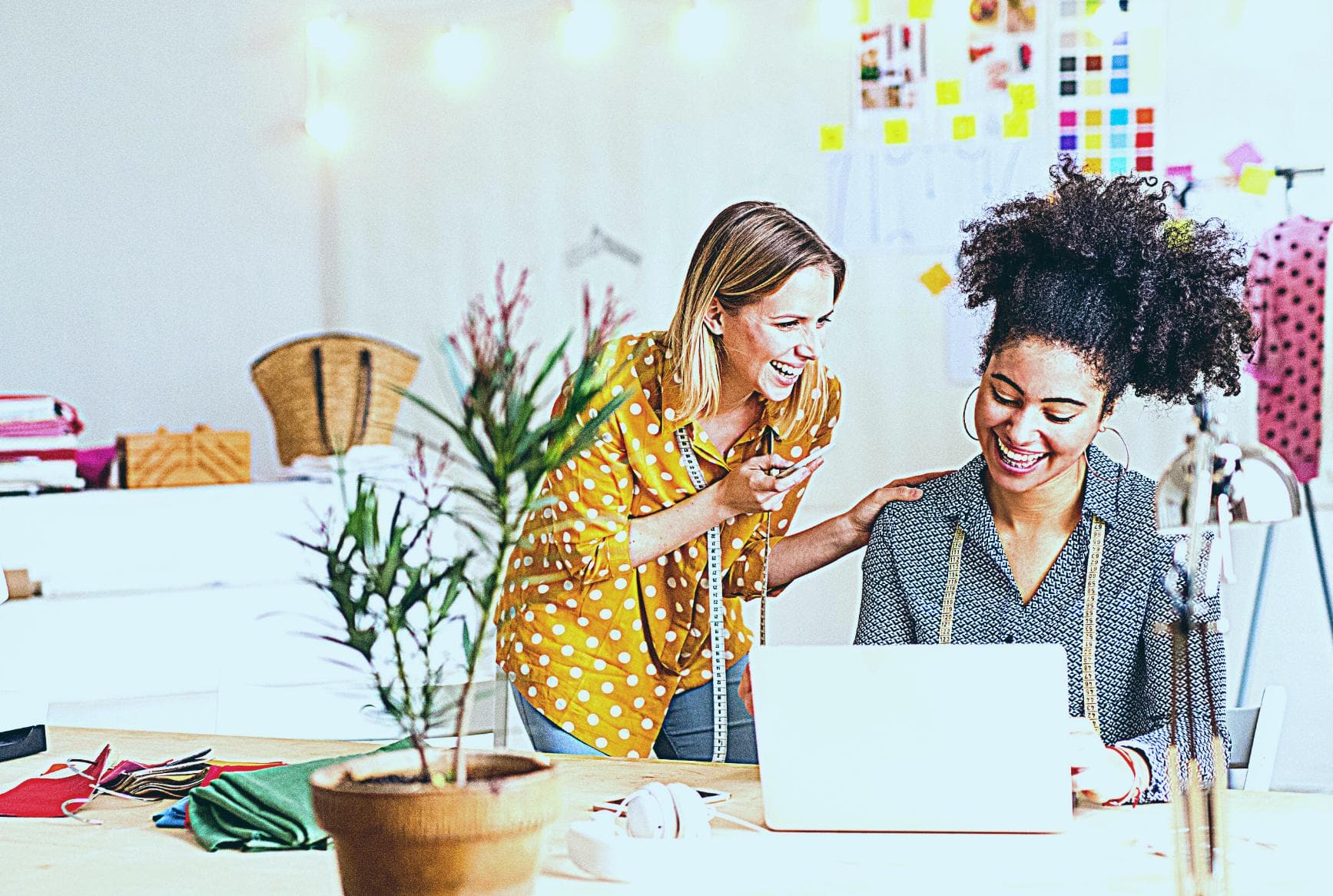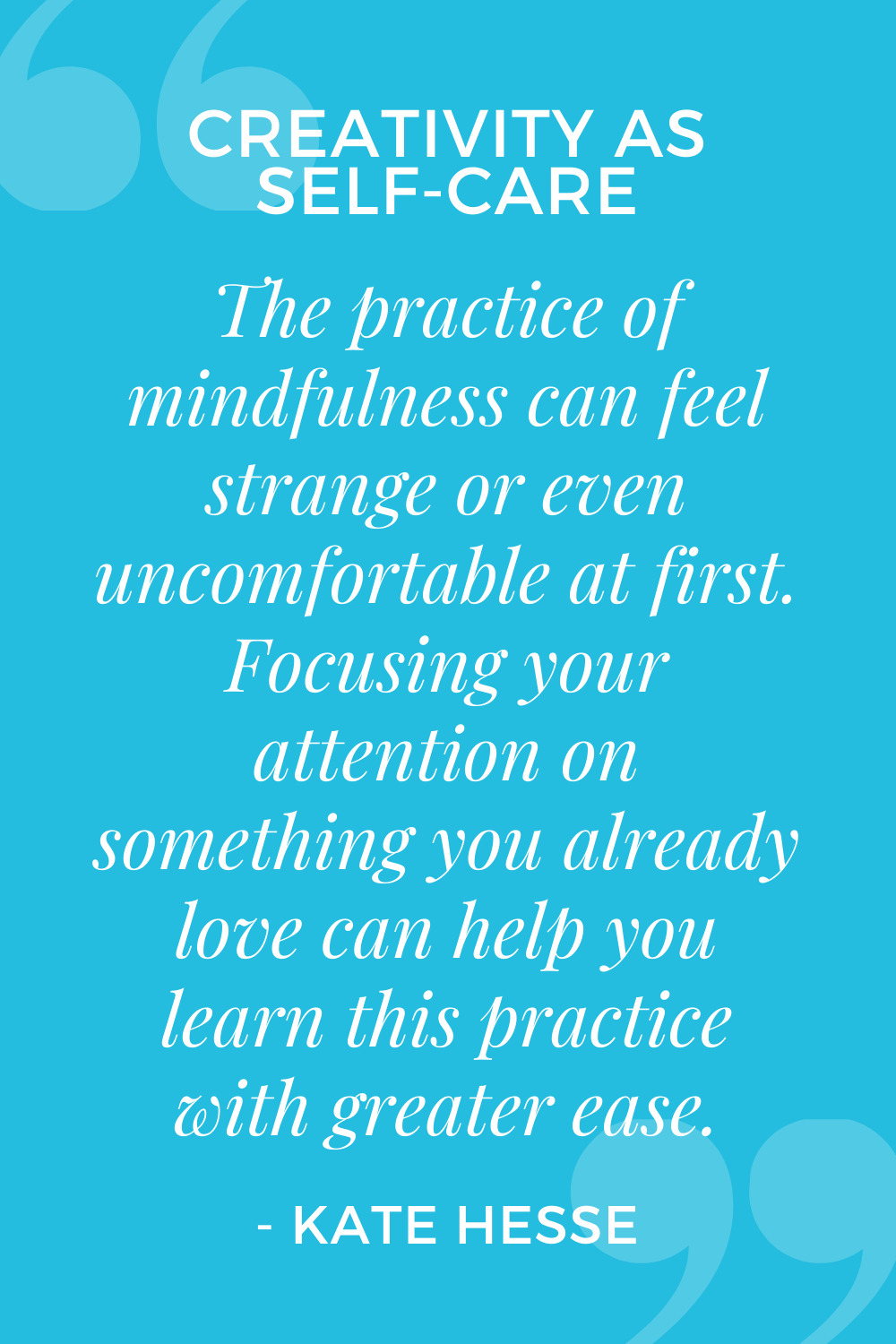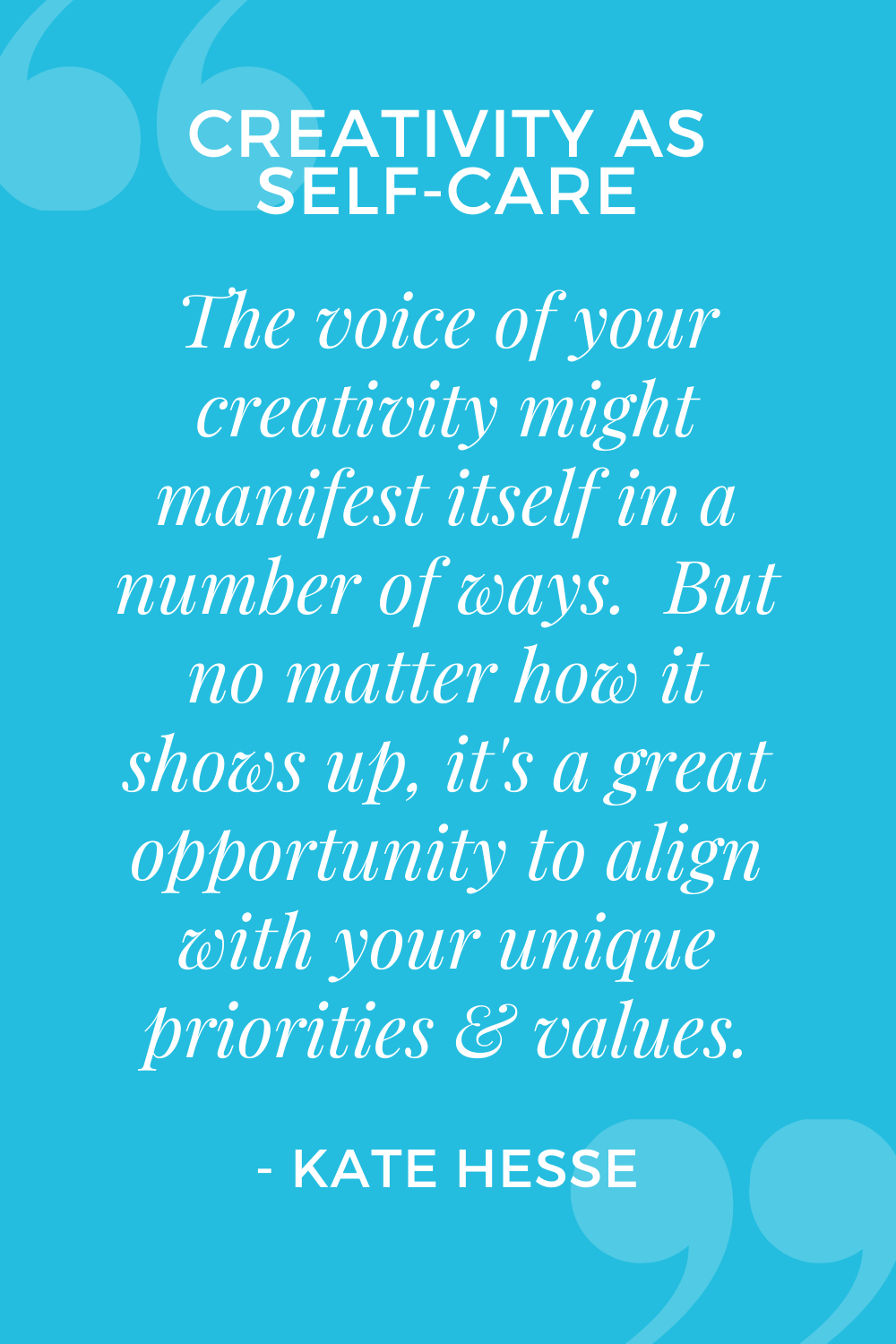Why a creative outlet is important for your mental & emotional wellbeing
By Kate Hesse
When you scroll through my resources, you might notice a collection of craft projects. But you might also wonder what a creative outlet has to do with quieting your inner critic and creating your inner sanctuary.
The answer is A LOT!
First, many creative outlets are great opportunities to practice mindfulness. Second, I believe strongly in having a creative outlet to express yourself and play with curiosity in a way you don’t always get during your 9-5 hours. Finally, creating something for yourself, or for someone else, gives you a reason to celebrate.
Practice mindfulness through creativity
 If you already have a creative outlet, I’m sure you can think of a time you were so immersed in what you were doing you lost track of time and everything around you.
If you already have a creative outlet, I’m sure you can think of a time you were so immersed in what you were doing you lost track of time and everything around you.
Engaging with something so deeply pulls your full attention into the present moment. And this is an act of mindfulness.
And mindfulness is powerful because it helps us shift out of fight, flight, or freeze, and into rest and digest. It brings calm and ease to your minds and bodies.
Meditation & Mindfulness are not the same thing
While mindfulness and meditation are frequently mentioned in the same breath they’re not actually the same thing. Meditation is the process of quieting your mind, of turning your focus inward while seeking to bring a stillness to your turbulent thoughts.
I love the way Steven Webb described it in an interview I listened to recently: “Meditation is not about having a blissful experience, it is about taking control of our thoughts and minds”.
Mindfulness by contrast is the act of being fully present in the moment with whatever you’re engaged in. If you’re working on a difficult knitting pattern, it’s paying attention to each stitch to make sure you don’t drop one or skip a step. Maybe it is a woodworking project where you’re aware of every shift of your hand as you shape the wood.
Accessing mindfulness through creativity
When you have an activity you love and can fully immerse yourself in it, it becomes much easier to drop into a state of mindfulness.
If you already have a creative outlet, but you engage in it while dividing your attention (e.g. knitting while watching tv, painting while listening to a podcast), try focusing your full attention on the activity, turning off any other distractions. Does it feel different, do you enjoy the experience of a more mindful activity?
Note, if you’re used to distraction in your life, the practice of mindfulness can feel strange or even uncomfortable at first. Focusing your attention on something you already love can help you to learn this practice with greater ease.
If you don’t already have a creative outlet, now is a great time to pick up a hobby you’ve been thinking about for a while. Don’t know where to start? I have a list of ten different ways you can start to get creative here. Once you pick something, bring your full attention to it and experiment with your creative outlet as a mindfulness practice.
Why creativity is so important
I love the way Michelle Lee put this in a recent interview: “Women are designed to create, to give birth to not only babies, but also everything else”.
When I work on a project, I go through a process of fertilization or inception (the spark of the idea which will become the project), development and creation (the actual steps from A-Z of project creation), and finally birth or realization (when the project is finished and I can stand back and look at what I’ve created). You can draw a close parallel between the process of conception through birth of a human baby.
Given the close connections between these two types of creation, it’s no surprise that the sacral chakra (located below the navel in the lower abdomen) is the chakra for both reproduction and creativity.
Giving voice to your creativity
 By engaging in a hobby or creative pursuit, you’re giving voice to the creativity inside you, allowing the sacral chakra to express itself. Keeping your creativity locked inside can lead to energy blockages in the area of the sacral chakra.
By engaging in a hobby or creative pursuit, you’re giving voice to the creativity inside you, allowing the sacral chakra to express itself. Keeping your creativity locked inside can lead to energy blockages in the area of the sacral chakra.
The voice of your creativity might manifest itself in a number of ways – I am a big hugger, giving someone a blanket I’ve knit or sewn with love they can wrap around themselves is my version of leaving them with a permanent hug. My creativity is saying – hi, I love you even if I am not around right now.
Glennon Doyle was seeking a way to express herself so she started blogging and later wrote books. Her writing not only helped her understand herself better, but also helped countless women understand themselves through her experiences.
This is also a great way to focus on aligning with your core values by folding what’s important to you into your creative outlet.
Creating for the sake of being creative
In order for our lives to be balanced we need to provide opportunities for all our chakras to express themselves and have a voice.
While you might have a desired finished product in mind – take my blankets for example – allow your own uniqueness to come through in your project. The yarn I pick, the pattern I use, and the way I combine them are uniquely reflective of my creativity.
When your creative outlet is just for you, you can create from your own viewpoint – there’s no concern of marketability of the product of your creativity. This allows you to be radically authentic, and “a balanced second chakra leads to feelings of wellness, abundance, pleasure, and joy.”¹
The satisfaction of making it yourself
When I complete a project, I’m always amazed at how the raw materials managed to come together to create something so unique and interesting. It’s incredible to look at a finished blanket that was once a basket of yarn or a quilt that until a few hours ago was scraps of fabric floating around on a table. I’ve made ceramic plates that went from a lump of clay to a lotus flower sitting on my dresser holding my jewelry.
Knitters are frequently categorized as process knitters (those who knit because they love the actual knitting experience), product knitters (those who knit to create something), or both. I think the same can be said for most creative outlets.
For me, I fall into the both category. I love the process of creating something, the rhythmic process of knitting, the hum of the sewing machine, the feel clay in my hands, and the magic of watercolors spreading across a page. And once the project is finished, it’s a different kind of pleasure standing back and looking at what I’ve accomplished.
It doesn’t have to be a perfect product to be celebrated
You won’t always create something perfect – and why would you – you’re a human having a human experience, not a machine designed to execute perfectly.
But in the end, you’ll have created something only you could have made – it will have your own personal spin and be reflective of who you are.
Whether you create something useful to keep for yourself, something decorative to hang in your home, or something you’re proud to give as a gift, you’ll have done it yourself. Hopefully that completed project will fill you with pride and satisfaction at having created something yourself.
And if it doesn’t. That’s ok too!
There are no failed projects – only lessons learned
I’ve finished sweaters and promptly ripped them out to reuse the yarn in another project. But instead of looking at it as a failed project, I instead see it as a lesson learned.
I learned something about the nature of the fabric that yarn produces. Or maybe I learned that a certain shape really doesn’t flatter me. Perhaps I learned that I really should check gauge before launching into a project.
When your creative endeavor doesn’t come out the way you expected, put it away for a day or two. Then ask yourself – is it really as bad as I initially thought? (You might be surprised how often the answer is nope – it’s actually pretty good.)
And if you’re really not happy with the finished product, ask yourself what lesson you can learn from the process and the outcome. Then consider how you can use those lessons to improve your next project.
Ready to get started?
If you already have a hobby, try engaging with it as a mindfulness practice by removing distraction and focusing your full attention on what you’re doing.
Do you need a hobby? Check out this post for ten different outlets which might spark your creativity. You can also find endless ideas on Pinterest – search for any medium that interests you to find hundreds of inspiring ideas.
Wishing you a mindful moment of pure creative expression.
Trying to figure out how to work in time for creativity as part of a regular self-care routine? Get my FREE Self-Care Toolkit and get everything you need to build a daily self-care routine that works for you and your life!
Related
Leave a Reply Cancel reply
This site uses Akismet to reduce spam. Learn how your comment data is processed.